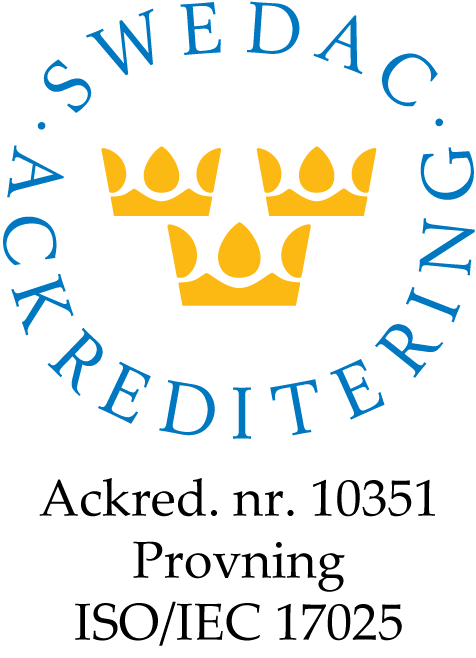Total number of bacteria - microscopy
General about total number
Bacteria are found almost everywhere. Using different cultivation methods, key groups of bacteria can be quantified. However, cultivation methods often only capture a fraction of all the bacteria present in a water sample because most bacteria are difficult to grow or there are simply no suitable cultivation methods.
In microbiological investigations of water, especially when it is supposed that bacteria cause problems with quality or health, the determination of total numbers gives a good view of the microbiological status of the water. The method is based on filtration of the water sample with subsequent microscopy. In addition to the number of bacteria, we also note whether their shape and appearance can contribute to clarifying the microbiological status of the water. We can also determine if there are fungi, algae or single-celled animals (protozoa) in the samples.
Method
The method is based on a standard method for determining the number of bacteria using a so-called epi-fluorescence microscope (ASTM D4455-85). A fixed volume of the water sample is filtered through a bacteria-tight filter and then the bacteria are stained with a fluorescent dye called acridine orange. The filter is placed in a microscope with special lighting that makes the bacteria glow orange which makes them easy to count.
Sample types
The method can be applied to most environmental waters such as tap water, well water, lakes, sea and various industrial process waters.
Analysis cost (accredited analysis)
| Analysis | Price (SEK excl. VAT) |
| *Total number of bacteria in environmental water sample | 1870 SEK |
| *Total number of bacteria in water from process industry | 2405 SEK |
| Photographic documentation of bacteria present | 475 SEK |
*Accredited analysis
Sampling
Samples should be taken in 50 mL test tubes and sent cooled overnight to the laboratory, or, delivered directly to the laboratory after sampling. Immediately upon arrival at the laboratory, the samples are stabilized with 3% formaldehyde.
Delivery time
Analysis reports are normally provided 2-3 business days after arrival, with the exception of public holidays.
Order test tubes and analysis
Contact us by phone on + 46 31 338 32 30 or at analys@micans.se or ordering test tubes and delivery information. It is an advantage for laboratory planning if you can inform us about the type of sample, the number of samples and the estimated arrival date in advance. Samples and completed delivery notes are then sent to the laboratory according to the instructions.
For the sample to be stable, it must be kept cool 5 ° C ± 3 ° C during transport. In the laboratory, the sample is stabilized directly with formaldehyde unless immediately analysed. In this way, the recommendations are followed in the current standard for water studies **.
According to the sampling recommendations, samples must therefore be sent with fast and safe transport to our laboratory. Please note that the samples must be delivered directly to the laboratory (not to delivery points).
Microbial Analytics Sweden AB
Bruksgatan 17
SE-435 35 Mölnlycke, Sweden
Contact us for a quote if you want Mican's staff to carry out on-site sampling.
If you want to analyze more than 10 samples per day, the laboratory must be contacted at least 2 days in advance. Quotation can be submitted for larger orders.
If you have any questions, please contact us on + 46 31 338 32 30 or at analys@micans.se
**SS-EN ISO 19458: 2006
